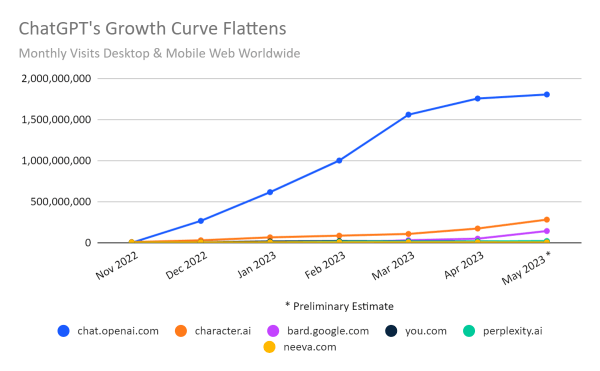June 13, 2023
Try asking a child to say toast 10 times, then question, what goes in a toaster? They’ll likely say toast instead of bread.
Now ask a CEO to say artificial intelligence (AI) 10 times, then probe, what’s your most important agenda item? Chances are, they’ll say AI.
“I could spend half an hour talking about ESG and decarbonisation and at the end of that conversation, CEOs will rank this as the most important priority,” said Robert Hillard, Consulting Leader across Asia Pacific at Deloitte.
“Or I could spend half an hour outlining the risk of cyber attacks and the existential threats to a company following a major breach, then that will focus the mind of a CEO. The same principle applies to AI.”

The boardroom is juggling these three “universal priorities” in 2023, according to Hillard, with organisations struggling to differentiate between each.
There’s a serious undertone to Hillard’s anecdote however, chiefly that the technology industry is guilty to a fault of ramming a shiny new toy down the throats of corporate executives on an annual basis.
“Last year it was blockchain,” he recalled. “Every company was block-washing projects to label deployments with the blockchain tag or to form any kind of association with crypto or Web 3.0. This captured the popular imagination at the time but some things stick while others fade away.”
Fuelled by ill-informed media providing a mouthpiece for such marketing hyperbole, there is an element of The Boy Who Cried Wolf with the launch of new technologies. The moral of that children’s fable is that dishonesty is dangerous and liars will not be rewarded – perhaps gross exaggeration is more appropriate for the new technologies debate.
“I absolutely understand the cynicism in the wider community given there is a new trend every year which becomes the ‘most important thing’,” Hillard acknowledged.
Entering exponential territory
Search “exponential AI” and Google can deliver 62,500,000 results in 0.36 seconds, emphasising the scale of information circulating and the sizeable impact on executive thought processes.
In drawing on more than 30 years of industry experience – with a front-row seat to countless declarations of “exponential” excellence from vendors – Hillard is well-placed to offer a pragmatic assessment regarding the potential of AI.
“AI is a very good example of an exponential technology that has not just appeared on the horizon,” Hillard clarified. “There are a number of reasons why 2023 was always going to be the year, with hindsight, that AI gained the level of prominence that it has.”
While OpenAI somewhat unexpectedly releasing ChatGPT in November 2022 was a market disruptor, Hillard said large language models and compute infrastructure were already approaching a point of scale and maturity.
“Someone was going to release something that would disrupt the market and capture the popular imagination, but more importantly, the corporate imagination,” he noted. “None of this is new and has suddenly appeared.”
Adored by inspiring entrepreneurs and innovative investors, exponential technology growth curves allow for a number of early mistakes while also reaching huge audiences at pace. In that sense, trade-offs do exist between exponential and linear solutions.
“Look at the debate between battery powered electric vehicles and hydrogen,” Hillard said. “Hydrogen is an exponential technology in a way that lithium-ion is not. It’s not this year but when it does happen, everyone will say hydrogen is just a fad. Similar to AI, hydrogen technology will have a year but it’s not always clear which year that is.”
Capturing corporate imagination
After taking off like a rocket, ChatGPT (chat.openai.com) attracted 206.7 million unique visitors in April, generating 1.76 billion page views across the world in the process. Momentum continued in May with the number of page views totalling 1.8 billion, up 2.8% from the month previous.
According to Similarweb, the second largest AI chat website – character.ai – had 281.4 million visits in May, a 62.5% month-over-month increase.

As ChatGPT continues to capture the popular imagination, can AI make the leap and capture corporate imagination?
“CIOs are under pressure each year to either pick up a new trend or explain why not,” Hillard accepted. “This is absolutely the case with AI and CEOs are demanding that of executive teams – ‘do some AI projects so we don’t get left behind’.”
Such demand is leading to a surge in AI-washing projects, similar to that of other “next big thing” technologies previously. AI-washing is best known at the marketing level wherein vendors boldly claim offerings involve AI technology, when in fact the connection to AI is minimal. In the enterprise, this is now taking place in projects.
“Projects that are already on the drawing board now suddenly have a layer of AI to make them more palatable to the board and to increase funding,” Hillard said. “We saw that last year with blockchain.”
In the most cynical examples, AI-washing is used to simply silence the board but the most common scenario playing out is that organisations are finding comfort in the trial and error stage.
“They already have the car bonnet up doing work and now they have this new turbo charger to play with, so they are finding ways to drop that into the engine to see whether it adds anything of consequence,” Hillard outlined.
“If it doesn’t add anything then they can remove the turbo charger but the original investment remains valuable and the car keeps driving.”
At best, that is the current state of play in the enterprise today. CIOs are happy to experiment with AI to tick the corporate box for the CEO while also improve knowledge and understanding of the technology.
“But if the first point that you start to develop a response is when your competitor is stealing your market share, then you’ve left it way too late,” Hillard warned.
“The problem is, predicting that point. If any executive claims to be able to predict that point, don’t believe them because they should be out buying or shorting stocks making themselves a fortune.”
If actions speak louder than words, organisations are talking more about generative AI than actually doing at this current stage – whether in Sydney, Seoul or Singapore.
“Projects that are already on the drawing board now suddenly have a layer of AI to make them more palatable to the board and to increase funding”
Robert Hillard (Deloitte)
But despite an early mismatch, the direction of travel is clear. Asia Pacific offers the perfect breeding ground for AI as the most culturally and linguistically diverse region on the planet, providing businesses can also navigate fluctuating regulatory, geopolitical and economic variables.
“This region is experiencing the greatest tilt from a population perspective, the greatest growth from an economic perspective and the greatest ambition from a social perspective,” Hillard outlined. “That’s a heady combination.”
Post-pandemic, longitude now matters more than latitude with timezone alignment carrying more weight, irrespective of north or south locations.
As a result, companies and workforces are collaborating together across longer distance spans, with generative AI “phenomenally well-placed” to handle multi-lingual interactions.
“Think of the economic benefits in Japan, Korea and China, through to the ASEAN countries plus Australia and New Zealand,” Hillard noted.
“This will allow people to work in the language they are most comfortable and collaborate in real-time across nations to build offerings that are beneficial to customers. There’s literally hundreds of companies that now have the capability to build those kind of products in Asia Pacific.”
Furthermore, Hillard said AI can act as important middleware between companies, combining with cloud in a way that has the potential to unlock company partnerships, joint ventures and market offerings on a level not yet before offered.
Specifically, AI holds the ability to bring two or three platforms together to create something that would normally require a lengthy process to build linking pipes between companies.
“The expertise to architect those sorts of solutions is going to be a mix of strategy and AI architecture with knowledge of business architecture – all in one,” Hillard explained.
Open source implications, regulatory factors
From a market positioning perspective, generative AI is currently consolidated to a relatively small number of major vendors – Microsoft, Apple, Amazon, Nvidia, Meta and Google among others.
“Don’t underestimate the open source community that is elbowing through the crowd to take its place,” Hillard observed.
“Look at the now infamous Google email leak – ‘We Have No Moat, And Neither Does OpenAI’ – that comment applies to the entire market and poses a question for companies and regulators to think about.
“The business community and the government will make the decision on whether or not a moat should be introduced and who will benefit.”
Technology aside, governments are taking positions across the world with regulation – chiefly horizontal and vertical – the fundamental area of discussion.
Horizontal regulation applies to all uses of AI spanning all sectors and applications with the regulatory authority often falling on government. Vertical regulation is limited to only specific uses of AI or specific sectors and will likely be controlled by an industry body as a regulative authority.
“Horizontal regulation is focused on extending the work on data regulation into the realm of AI,” Hillard explained. “This regulates the platform and for data, this covers data residency, sovereignty and privacy.
“Lift that up a level and debate is taking place regarding what can be absorbed into a model and obligations around the traceability of data used to train a model.”
Specific to vertical regulation, Hillard said governments are assessing to what degree the actual application or consequence of AI is regulated.
“The consumer companies are very worried about whether a substantial difference in vertical regulation will exist between countries,” he added. “For example, what will the consequences be of a chatbot giving incorrect advice to somebody in a particular domain? What’s the liability and will that be different across countries?”
Essentially, nations must decide whether to act early to provide social protection or take a step back and protect innovation.
“Developing countries are viewing this as an opportunity to encourage innovation and get a step ahead from a productivity and growth opportunity perspective,” Hillard said. “This could outweigh the potential disruption should they navigate those pieces in the middle correctly.”
In leading Deloitte Consulting across Asia Pacific – including Australia, New Zealand, Singapore, Malaysia, Indonesia, Thailand, Vietnam, Japan, Korea, China and India – Hillard oversees the management and growth of an advisory practice housing more than 30,000 professionals.
Amid all the noise, the position his team is taking to market is clear: “we are recommending that every company builds their AI expertise.”
Inform your opinion with executive guidance, in-depth analysis and business commentary.